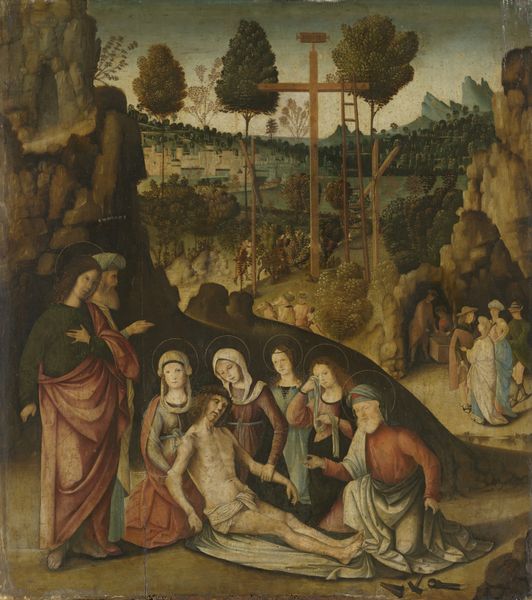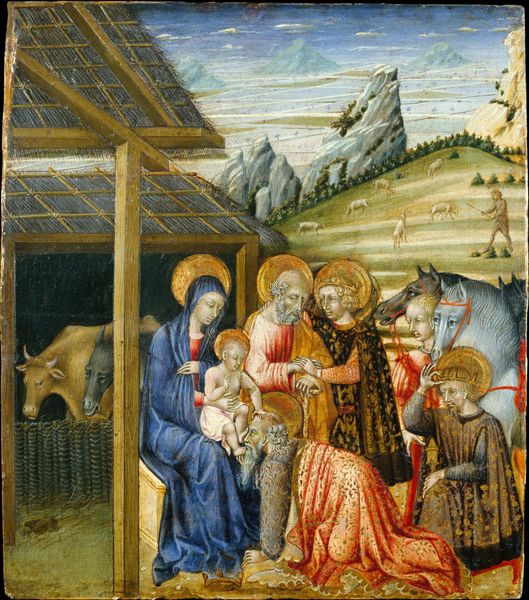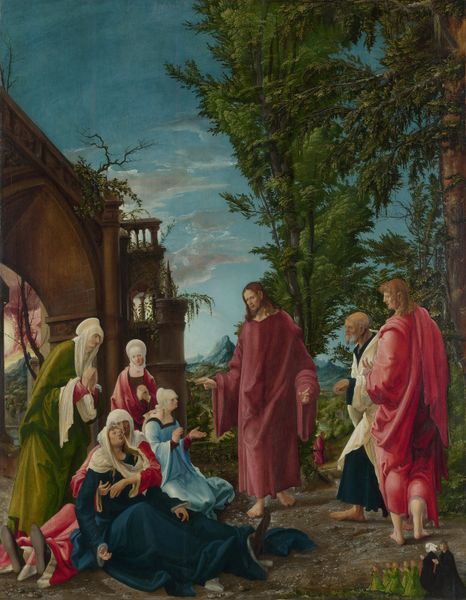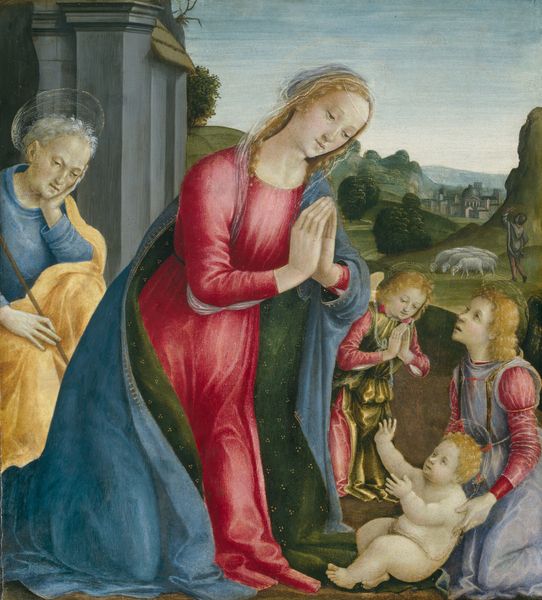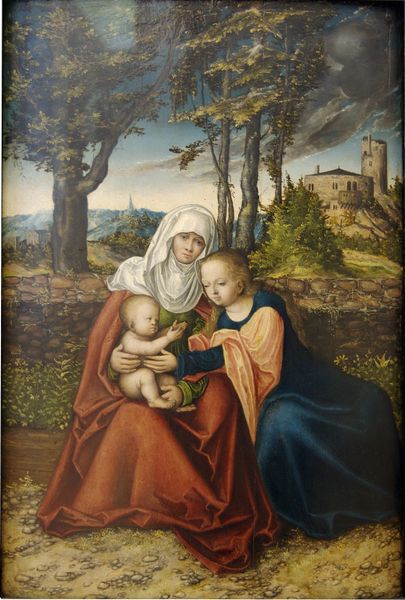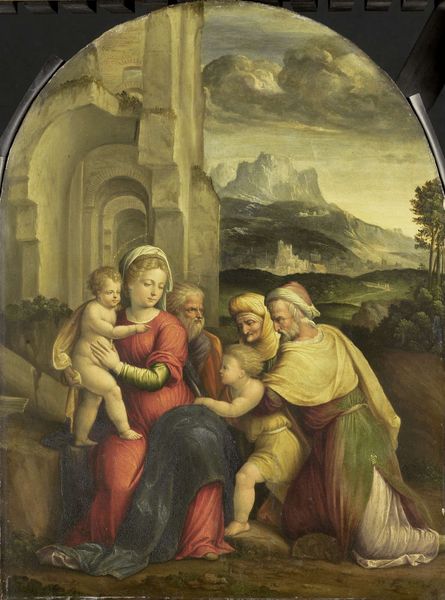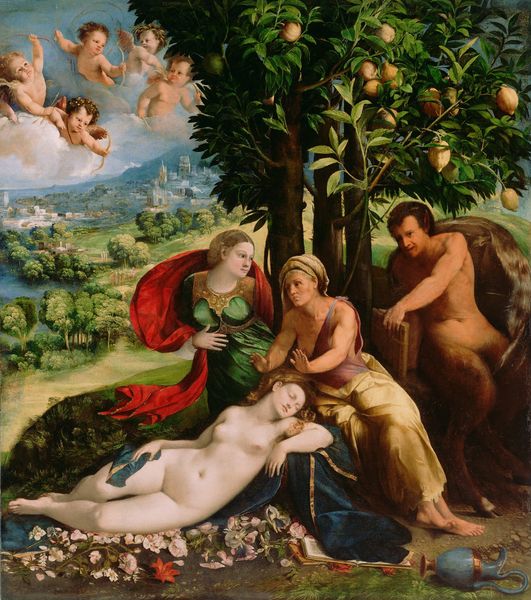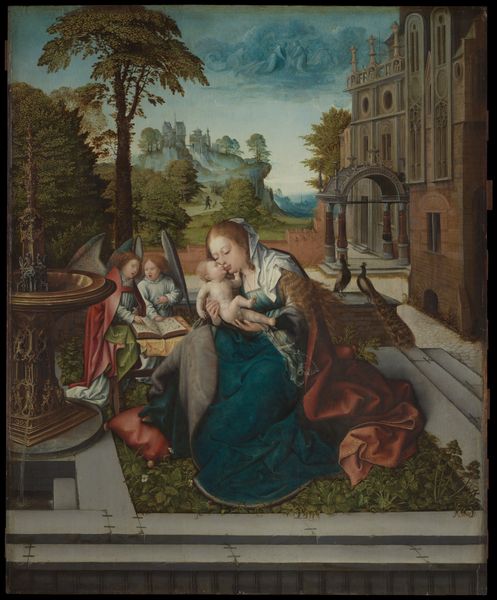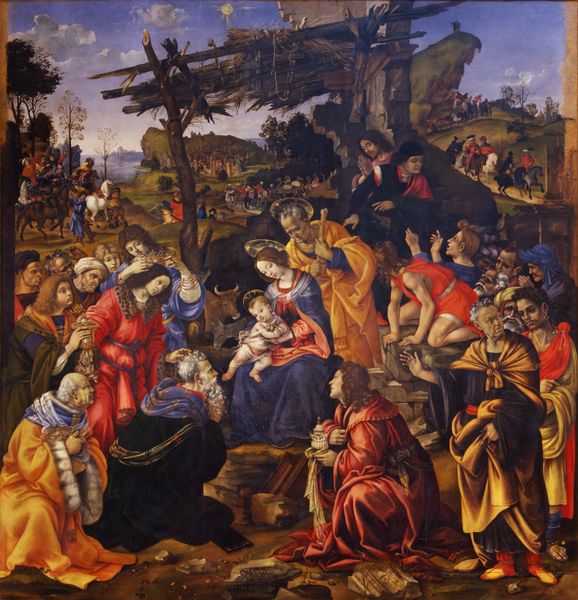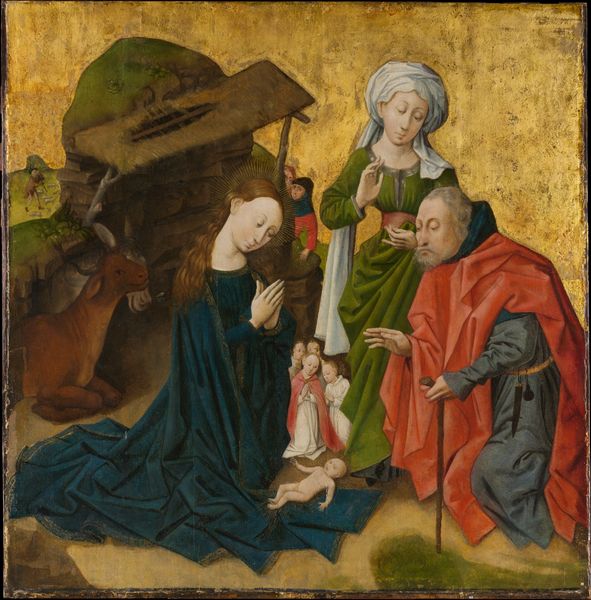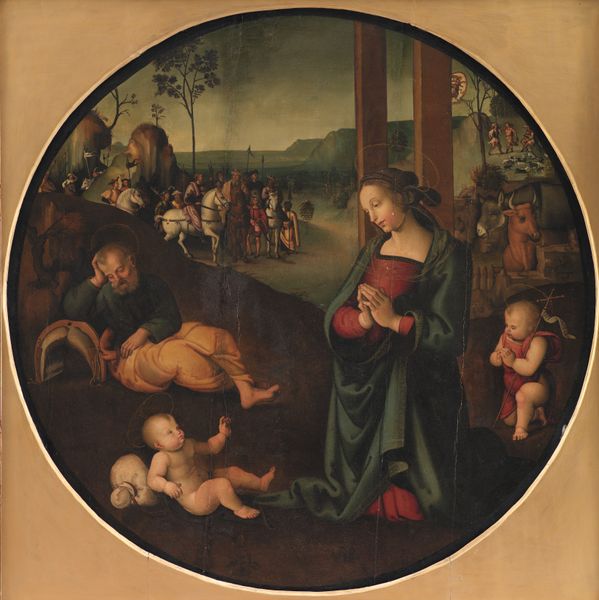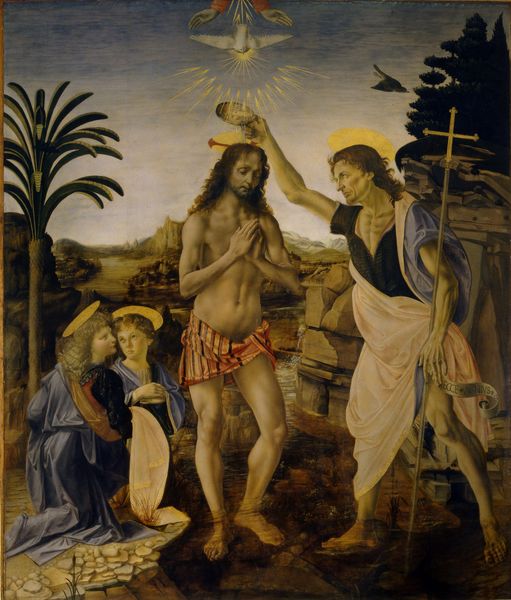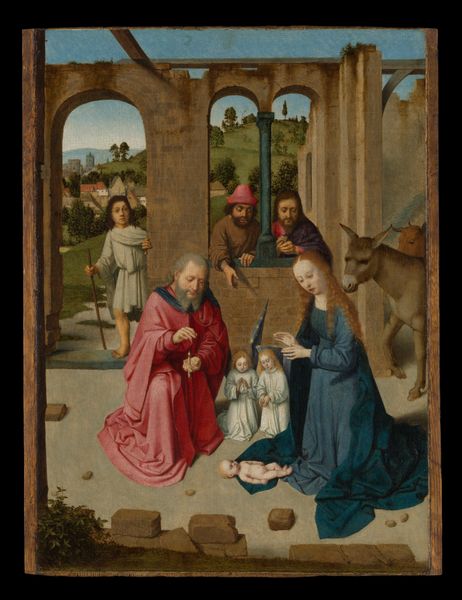
painting, oil-paint
#
portrait
#
high-renaissance
#
allegory
#
painting
#
oil-paint
#
landscape
#
figuration
#
madonna
#
oil painting
#
child
#
genre-painting
#
history-painting
#
academic-art
#
italian-renaissance
#
angel
Dimensions: Arched top, 157 x 81 1/2 in. (398.8 x 207 cm)
Copyright: Public Domain
Curator: My first thought? So serene. Look at those soft colors, that distant castle. It’s like a dream of the Renaissance. Editor: And a dream steeped in hierarchy. This is Girolamo dai Libri’s "Madonna and Child with Saints," painted sometime between 1515 and 1525. Note how the composition stages power, with the Madonna literally elevated above the other figures. Curator: Power, sure, but I also feel a tremendous amount of love emanating from this scene, from the tenderness in Mary's eyes, to the adoration of the angels at her feet. It’s less about power and more about devotion, I think. Editor: But who gets to be devoted, and to what end? Consider the saints positioned on either side—they’re predominantly male, acting as intercessors. Mary and Christ are centered, yes, but within a very specific patriarchal structure. And that peacock—a symbol of immortality but also earthly pride. Curator: Hmm, that's true... That darn peacock! It makes me consider the incredible skill Girolamo possessed, with his mastery of oil paints! I want to run my fingers across the Madonna's soft face. Look at the angels down below too, all clustered in sweet adoration, oblivious of anything except for making some music for mother and child. I almost didn't notice them when I looked the first time... Editor: Right, their proximity highlights access. The angels and male saints have easier access to divine grace than perhaps, say, the common woman of the time. The landscape, typically seen as a backdrop, becomes a symbolic space reinforcing societal norms. The walled city is visible in the distance on a small scale; this work tells a story of exclusion as much as of access. Curator: I'm starting to see that... The landscape ISN'T a paradise of naturalism at all. But you know, maybe the point is less about enforcing exclusion and more about presenting an ideal, however flawed that ideal may be in our modern eyes. It's an artist’s vision of perfect harmony. Editor: Perhaps. But art doesn't exist in a vacuum. By situating the Madonna within this very structured environment, Girolamo reinforces the social order of his time, intentional or not. Curator: Well, now, I see this a bit differently, you’ve truly helped me expand how I look at it all… Editor: And I find myself, unexpectedly, appreciating that even within those constraints, a feeling of gentleness still radiates outward.
Comments
No comments
Be the first to comment and join the conversation on the ultimate creative platform.
